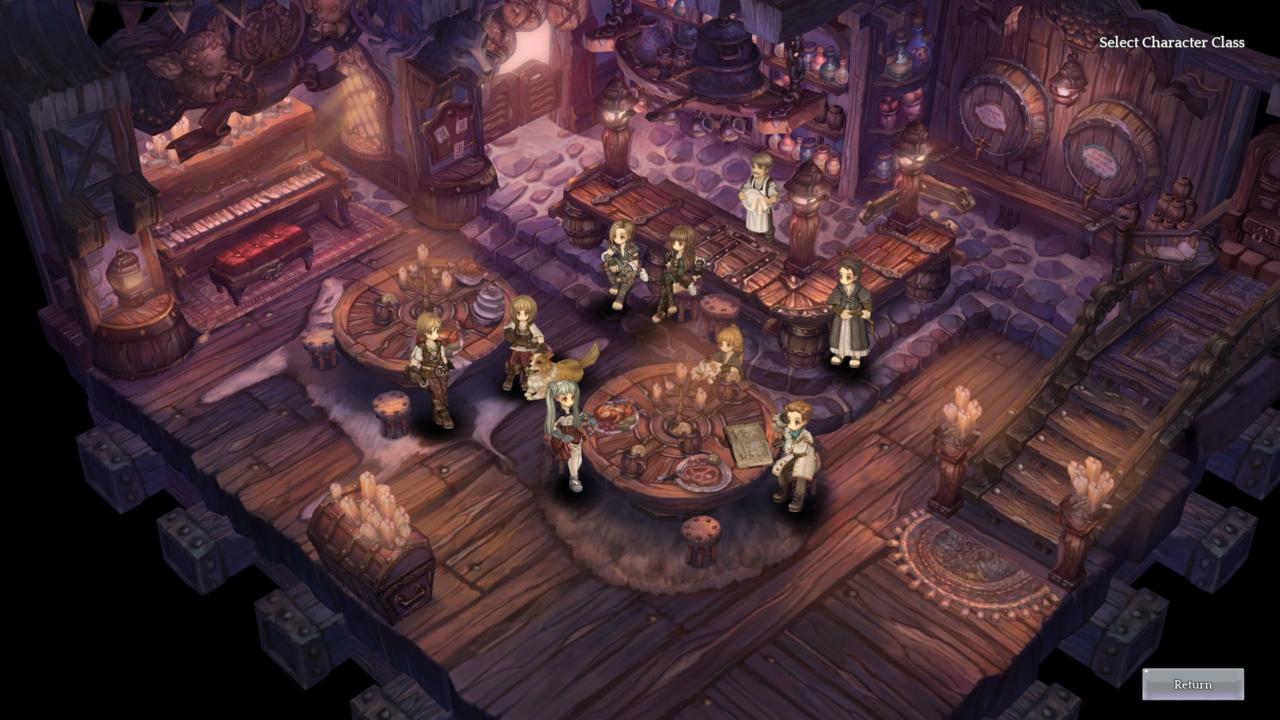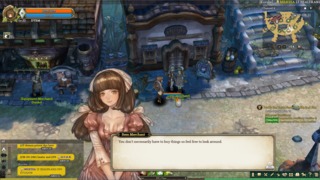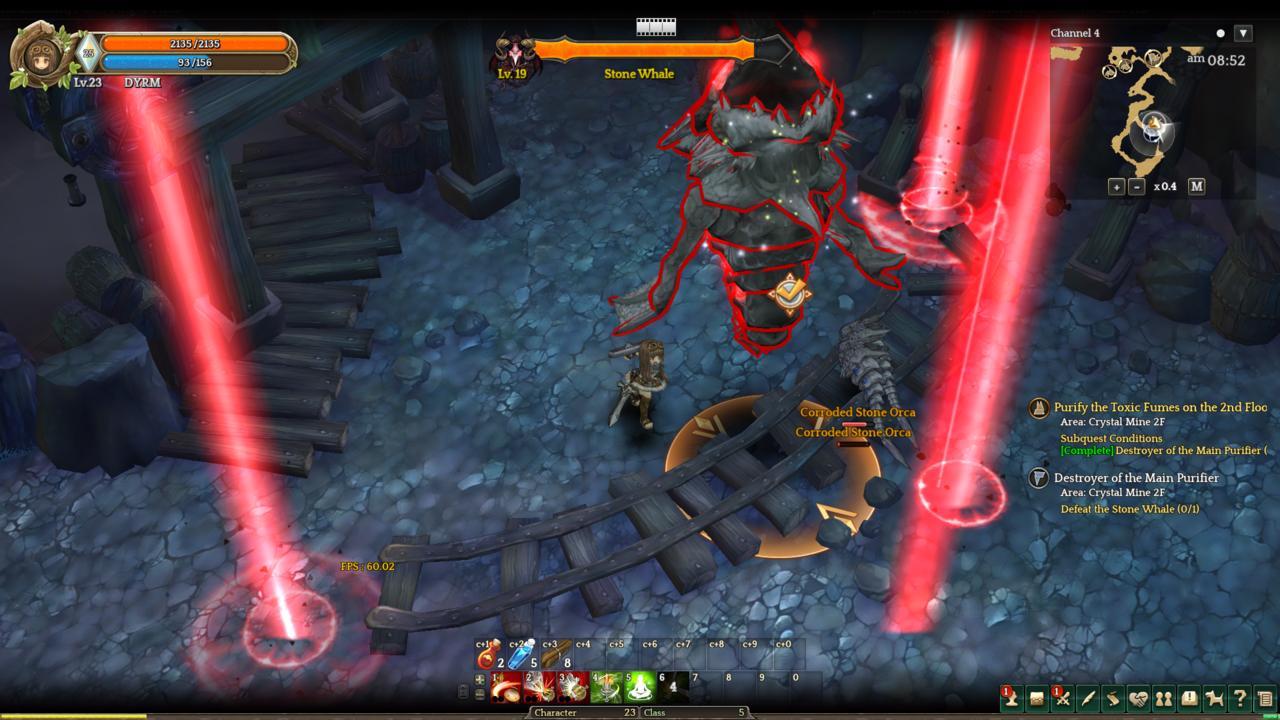Isometric MMORPG Ragnarok Online first came into my life in 2004. Developed by South Korean-based studio Gravity, the PC game was such a phenomenon in Asia that it went on to launch in over 70 countries. Its success saw it spawn an anime series as well as several spin-off games, including the more recently-released Ragnarok Odyssey ACE.
It was the charm of Ragnarok Online's anime-style graphics, fantastic soundtrack, and challenging gameplay that struck a chord with younger me, and it didn't take me long to become well and truly immersed in the MMORPG, dedicating whole years of my life to playing it. When I learned that the creator of Ragnarok Online was working on an upcoming new MMORPG titled Tree of Savior, my curiosity was piqued. Could this new MMO game replicate the extraordinary success of the original Ragnarok Online? To find out, I got hands-on with the Tree of Savior English beta on Steam.
Another Crab's Treasure Is A Soulslike 3D Platformer | GameSpot Review Stellar Blade Review Super Monkey Ball Banana Rumble - Official Multiplayer Features Trailer Nintendo 64 – April 2024 Game Updates – Nintendo Switch Online PUBG | Erangel Classic Returns Gori: Cuddly Carnage | Meow Launch Date Announcement Trailer Genshin Impact - "Arlecchino: Afterglow of Calamity" | Collected Miscellany Marvel Rivals - Official Loki Character Reveal Trailer | The King of Yggsgard Fortnite Festival - Official Billie Eilish Cinematic Season 3 Trailer Remnant 2 - The Forgotten Kingdom | DLC Launch Trailer Stellar Blade - Official "The Journey: Part 2" Behind The Scenes Trailer | PS5 Games Dead by Daylight | Tome 19: Splendor | Reveal Trailer
Please enter your date of birth to view this video
By clicking 'enter', you agree to GameSpot's
Terms of Use and Privacy Policy
Upon starting the game, the influences from Ragnarok Online were immediately obvious. The character designs, types of starting classes, and the placement of 2D sprites in a 3D environment felt achingly nostalgic. Yet this obvious familiarity did not diminish Tree of Savior's unique aesthetic. The game's visual design is gorgeous and endearing, with the characters and buildings in the world decorated to the finest detail. Tree of Savior draws upon Lithuanian culture and mythology for the basis of the game's universe--even the game's first main city is named after Klaipeda, a real city in Lithuania.
As pretty as it is, the game's story isn't particularly unique or compelling; goddesses once ruled over the land and brought prosperity to the people. One day they all disappeared without warning, and a disaster followed which destroyed the kingdom's capital. Monsters began to emerge, swallowing people and wreaking havoc. Fast forward four years later to present day, and pilgrims claiming to dream of the goddesses have begun to gather. Naturally, it is up to the player to investigate whether these claims have any weight to them.
In the beta, Tree of Savior's character creator gives the option to select one of four starting classes: Swordsman, Wizard, Cleric, or Archer. Characters have two level types; the character level, and the class level. Increasing the character level grants more points to distribute to a statistic of the player's choosing: strength, constitution, intelligence, spirit, or dexterity. Increasing the class level grants a point to spend on a skill of their choosing. When I reached the maximum class level on my Swordsman, I was granted the option to advance further to one of two different classes; Highlander or Peltasta, each specialising in their own weapon and skill set. Developer IMC Games has promised that over 80 classes will be eventually offered in the game, each with their own unique skills and design.

Moving through the world with my character was fluid and I particularly enjoyed being able to hit space bar to jump over small obstacles and off small cliffs. Tree of Savior also offers an option to use a controller, along with the option to switch the UI accordingly. The time I spent with the keyboard, mouse, and controller movement schemes left me quite impressed with how clear and intuitive the interface was. Equipment statistics are clearly labelled and all the in-game text is descriptive and helpful.

Which is just as well, as fighting makes up the core gameplay in Tree of Savior. The original Ragnarok Online was notorious for the grind its players went through to progress through the game, where gameplay centred solely around levelling up by killing monsters. Quests were a rarity, and even then they seldom rewarded players with experience; usually they were completed to gain special items or change classes. While this monotonous grind is less of an issue in Tree of Savior it is still noticeably present. The MMORPG standard 'kill 15 of X' and 'collect 10 of Y' quests make up the bulk of these, with the main questline providing some context for the world and guidance on which area to move to next.
However, the necessity of running back to an NPC to hand-in a completed quest is negated by a handy teleport system. Upon completing the parameters of a task the game gave me the option to teleport straight to the NPC to hand it in. Gone are the days of running back to where I started to complete a quest. It is a small but nice touch which helped to move my progress along more quickly. However, solely completing quests did not grant me enough levels to keep up with the monsters I was hitting in the main storyline, and I quickly found myself back to the grind of killing small monsters for experience.
Even so, when the game attempted to break up the monotony of killing small monsters by offering "boss" battles, it fell rather flat. Although the bosses looked large and exciting and forced me to run around and actively scrutinise their attack patterns to survive, the battles quickly became repetitive. Run away when this boss is preparing a heavy stomp. Whack at its back with my sword for a few hits. Run away. Whack again. Rinse and repeat. The process feels like it drags on for much too long and becomes boring much too quickly--the opposite of what a boss fight should be. I feel like these would be greatly improved with more strategical elements or introducing different stages to the fights that go beyond simply running away from an incoming area-of-effect skill.

Although that did not diminish the sense of achievement I felt when I actually reached my next class. I opted for to upgrade from a Swordsman to a Peltasta, a class which specialises in simultaneously equipping a sword and a shield. The game rewarded me with a cute Peltasta-specific costume to don on my character which wouldn't affect my actual armour stats, and I wanted to run around town to show all the other players the new class I had become. Trivial? Yes. But the customisation options offered in Tree of Savior keep me wanting more. Accessories like goggles, bunny ears, and hats to don on my character are just some of what's available, and half the fun of running through the main city is to see how other players have dressed up.
Although Tree of Savior is still in its early beta stage the game's servers are already teeming with players, and it's easy to see why. Exploring new locations and fighting monsters is especially enjoyable in small bursts. The game excels at making your hits feel impactful, with skills and spells often lighting up and shaking the screen. Hopefully the boss fights get more creative when the game's release rolls around, and I look forward to exploring the class options the full game will have to offer.
Tree of Savior does not yet have a confirmed release date. It has been approved on Steam Greenlight.

